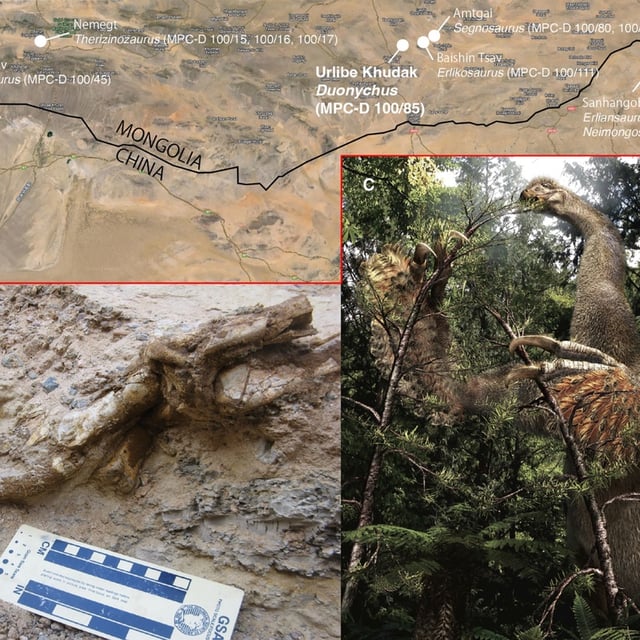Overview
- Duonychus tsogtbaatari is the first known therizinosaur with only two clawed fingers, diverging from the typical three-fingered structure of its relatives.
- The fossil, found in Mongolia's Gobi Desert, includes exceptionally preserved hands with keratinous claw sheaths, a rare feature in dinosaur fossils.
- Researchers believe the dinosaur's specialized claws were primarily used for grasping vegetation, reflecting its herbivorous diet, but may have also served defensive or display functions.
- The discovery highlights an evolutionary experiment in theropod hand anatomy, offering new insights into the diversity and adaptability of this dinosaur group.
- Named in honor of Mongolian paleontologist Khishigjav Tsogtbaatar, the species underscores the Gobi Desert's significance as a paleontological hotspot.

